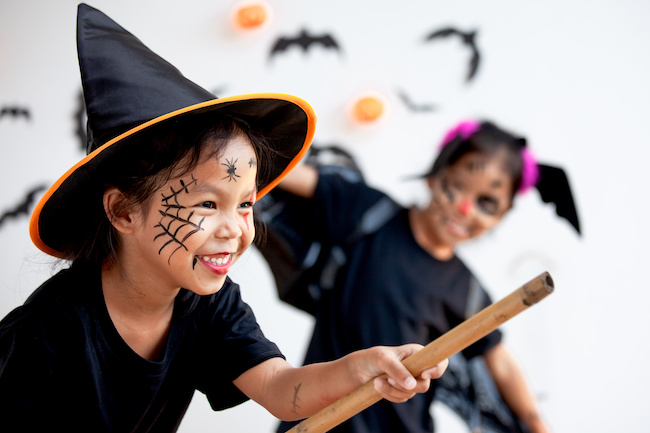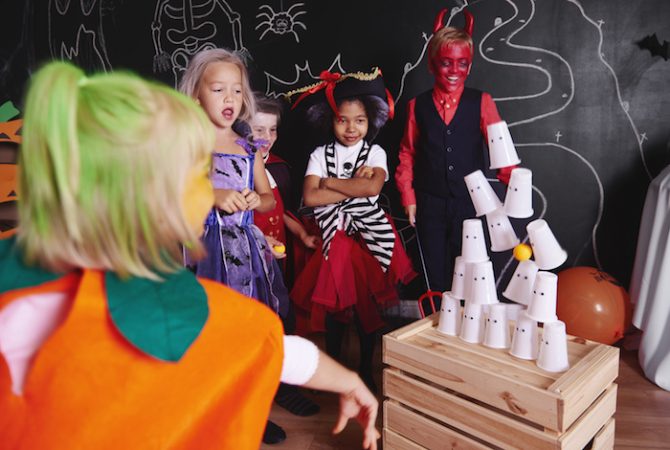The Spooky Obstacle Course is the perfect Halloween obstacle challenge for kids, combining physical activity, spooky surprises, and party excitement. Designed for ages 5 and up, this indoor or outdoor game turns any backyard or classroom into a haunted training ground filled with witches’ hats, spider webs, slime, and more!
Whether you’re planning a Halloween party, organizing a classroom activity, or just want an energetic themed game to entertain a group, this activity is packed with movement, creativity, and creepy-fun moments.
How to Play the Spooky Obstacle Course
This Halloween obstacle course works like a fun adventure trail where players must complete each spooky challenge in sequence. It’s ideal for small groups of kids rotating through stations, or for timed competitions with cheering spectators.
To set up:
- Prepare an area large enough for movement—indoors or outdoors.
- Choose and arrange several spooky-themed obstacles (see ideas below).
- Mark a start and finish line.
- Decide if players will go solo, in pairs, or in teams.
- Explain the goal: complete all the spooky challenges without skipping a step!
Children begin at the starting line and go through each obstacle one by one. Depending on your setup, you can let kids race against time or simply enjoy the adventure. The game ends when every player has completed the full course—or when time runs out in a team relay version.
For a printable escape adventure, try our Halloween graveyard escape room for kids—a spooky PDF kit for ages 6–7.
Game Sheet
A quick reference to help you plan:
- Number of players: 4 or more
- Recommended age: From 5 years old
- Setting: Indoors or outdoors
- Supplies: Various physical props for each obstacle
- Game duration: About 20 minutes (customizable)
This obstacle course is flexible: adapt the size, difficulty, and length depending on your group and space. It’s easy to personalize and repeat in different forms.
Want a magical race challenge? Try our witch spell relay game for kids—a fast-paced Halloween team game with a spooky twist!
Spooky Obstacle Ideas to Set Up
Here’s a list of creative Halloween-themed obstacle ideas you can mix and match to build your course:
- Weaving in and out of pumpkins – Navigate through a zigzag path of inflatable pumpkins.
- Crossing a slime pool – Walk a narrow plank over a tub of green jelly (slime) without falling.
- Giant cobweb crawl – Climb through a rope web without getting tangled.
- Jumping witches’ hats – Leap over hats lined up in a spooky row.
- Broomstick ride – Ride a prop broomstick across a short path like a flying witch.
- Spider trampoline bounce – Jump on a trampoline to collect plastic spiders.
- Haunted tunnel crawl – Crawl through a darkened tunnel filled with eerie decorations.
- Witch’s cauldron leap – Hop over a bubbling cauldron filled with colored water or fog.
- Graveyard dash – Zigzag between tombstone cutouts without touching them.
- Glowing ghost squeeze – Squeeze through hanging glow-in-the-dark ghosts or balloons.
- Spider web limbo – Limbo under a string web that gets lower each round.
- Mummy wrap challenge – Wrap a teammate in toilet paper like a mummy—fast and neat wins!
- Eyeball bounce – Hop from spooky eyeball props without touching the ground.
- Haunted hay bale maze – Navigate through a maze made of hay bales and creepy props.
- Goblin balance beam – Cross a narrow beam surrounded by goblin décor.
- Ghost dodge – Move between hanging sheet ghosts without getting tagged.
These challenges can be arranged in any order and scaled for younger or older children. Add creepy music and fog for full Halloween effect!
Love spooky searches? Try our Halloween photo scavenger hunt for kids—a creative challenge full of fun snapshots!
Variants to Try
Add even more fun by adapting the game with one of these variations:
- Time Trials: Let kids race individually against the clock.
- Blindfold Challenge: One child wears a blindfold while a partner guides them verbally.
- Team Relay: Each teammate completes one obstacle, passing a spooky item as a baton.
- Obstacle Remix: Change a few stations halfway through to keep things unpredictable.
- Haunted Effects: Use lighting, sound effects, or Halloween décor to enhance the atmosphere.
These ideas let you customize the experience to suit your group’s energy level, party theme, or available space.
Looking for a quick spooky game? Play our Tic Tac Toe Halloween game for kids—a festive twist on a classic.
Why Kids Will Love This Game
The Spooky Obstacle Course delivers just the right amount of Halloween spookiness while letting kids run, crawl, jump, and giggle with excitement. It’s the kind of activity that creates lasting memories—and lets kids burn off energy in a safe, creative way.
With fun props and silly surprises, even shy or younger children feel included and encouraged. Plus, every round of the game is different, so it never gets boring.
Need more party ideas? Explore our Halloween group games for kids—fun, spooky activities to liven up any celebration.
Educational Benefits of the Spooky Obstacle Course
This game isn’t just entertaining—it also supports valuable developmental skills:
- Enhances coordination and balance through movement-based challenges
- Improves teamwork and communication when played in pairs or teams
- Encourages creative thinking with imaginative obstacle design and roleplay
- Builds problem-solving skills as kids navigate unexpected physical challenges
- Promotes perseverance when obstacles require retrying or focus
- Develops spatial awareness through crawling, dodging, and jumping
- Increases confidence and motivation by overcoming each challenge
- Provides screen-free, physical activity in a structured, festive environment
With just a little prep, this game becomes a powerful tool for learning through movement and imagination.
For ready-to-play Halloween fun, explore our printable Halloween games for kids—escape rooms, mysteries, and hunts for ages 4–12.






